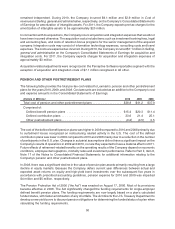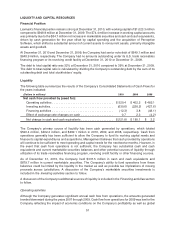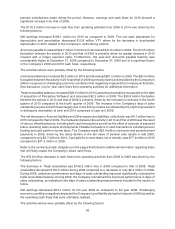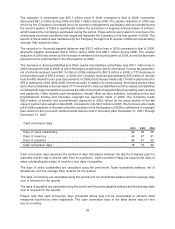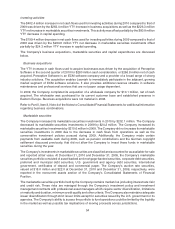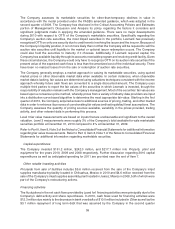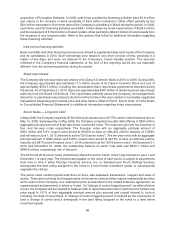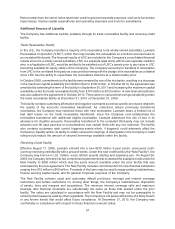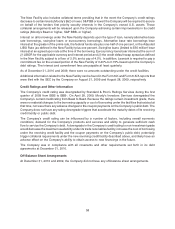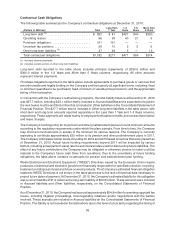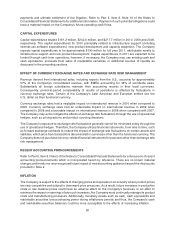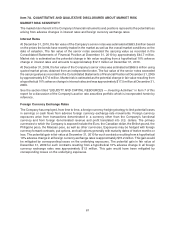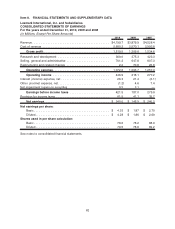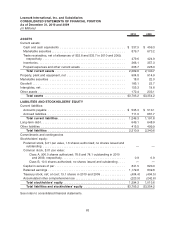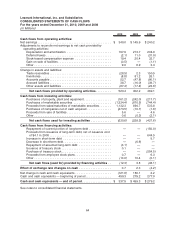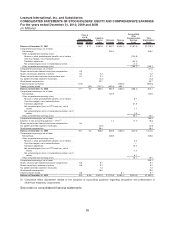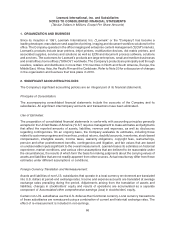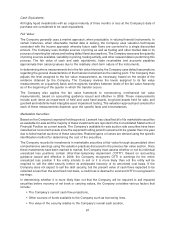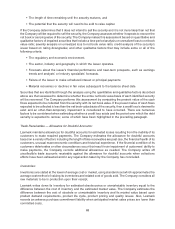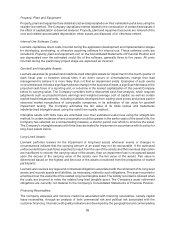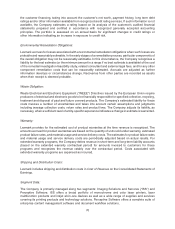Lexmark 2010 Annual Report Download - page 66
Download and view the complete annual report
Please find page 66 of the 2010 Lexmark annual report below. You can navigate through the pages in the report by either clicking on the pages listed below, or by using the keyword search tool below to find specific information within the annual report.payments and ultimate settlement of the litigation. Refer to Part II, Item 8, Note 19 of the Notes to
Consolidated Financial Statements for additional information. Payment of such potential obligations could
have a material impact on the Company’s future operating cash flows.
CAPITAL EXPENDITURES
Capital expenditures totaled $161.2 million, $242.0 million, and $217.7 million in 2010, 2009 and 2008,
respectively. The capital expenditures for 2010 principally related to infrastructure support (including
internal-use software expenditures), new product development and capacity expansion. The Company
expects capital expenditures to be approximately $190 million for full year 2011, attributable mostly to
infrastructure support and new product development. Capital expenditures in 2011 are expected to be
funded through cash from operations; however, if necessary, the Company may use existing cash and
cash equivalents, proceeds from sales of marketable securities or additional sources of liquidity as
discussed in the preceding sections.
EFFECT OF CURRENCY EXCHANGE RATES AND EXCHANGE RATE RISK MANAGEMENT
Revenue derived from international sales, including exports from the U.S., accounts for approximately
57% of the Company’s consolidated revenue, with EMEA accounting for 36% of worldwide sales.
Substantially all foreign subsidiaries maintain their accounting records in their local currencies.
Consequently, period-to-period comparability of results of operations is affected by fluctuations in
currency exchange rates. Certain of the Company’s Latin American and European entities use the
U.S. dollar as their functional currency.
Currency exchange rates had a negligible impact on international revenue in 2010 when compared to
2009. Currency exchange rates had an unfavorable impact on international revenue in 2009 when
compared to 2008 and a favorable impact on international revenue in 2008 when compared with 2007.
The Company may act to mitigate the effects of exchange rate fluctuations through the use of operational
hedges, such as pricing actions and product sourcing decisions.
The Company’s exposure to exchange rate fluctuations generally cannot be minimized solely through the
use of operational hedges. Therefore, the Company utilizes financial instruments, from time to time, such
as forward exchange contracts to reduce the impact of exchange rate fluctuations on certain assets and
liabilities, which arise from transactions denominated in currencies other than the functional currency. The
Company does not purchase currency-related financial instruments for purposes other than exchange rate
risk management.
RECENT ACCOUNTING PRONOUNCEMENTS
Refer to Part II, Item 8, Note 2 of the Notes to Consolidated Financial Statements for a discussion of recent
accounting pronouncements which is incorporated herein by reference. There are no known material
changes and trends nor any recognized future impact of new accounting guidance beyond the disclosures
provided in Note 2.
INFLATION
The Company is subject to the effects of changing prices and operates in an industry where product prices
are very competitive and subject to downward price pressures. As a result, future increases in production
costs or raw material prices could have an adverse effect on the Company’s business. In an effort to
minimize the impact on earnings of any such increases, the Company must continually manage its product
costs and manufacturing processes. Additionally, monetary assets such as cash, cash equivalents and
marketable securities lose purchasing power during inflationary periods and thus, the Company’s cash
and marketable securities balances could be more susceptible to the effects of increasing inflation.
60


